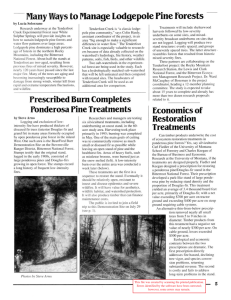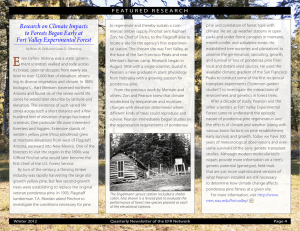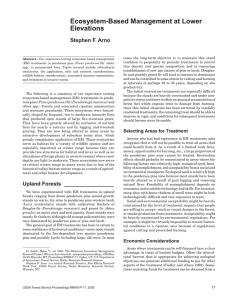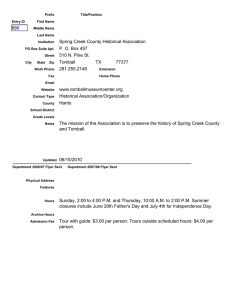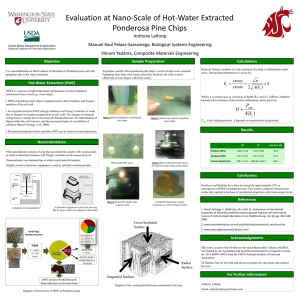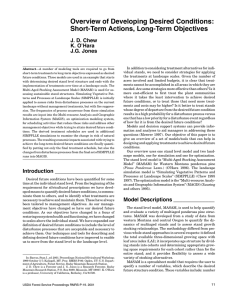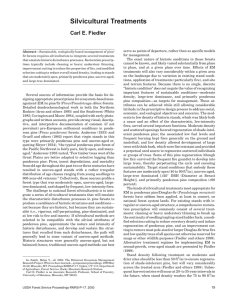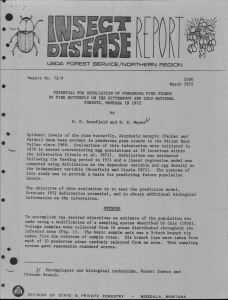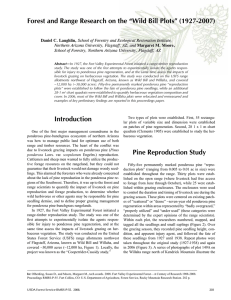R L C
advertisement
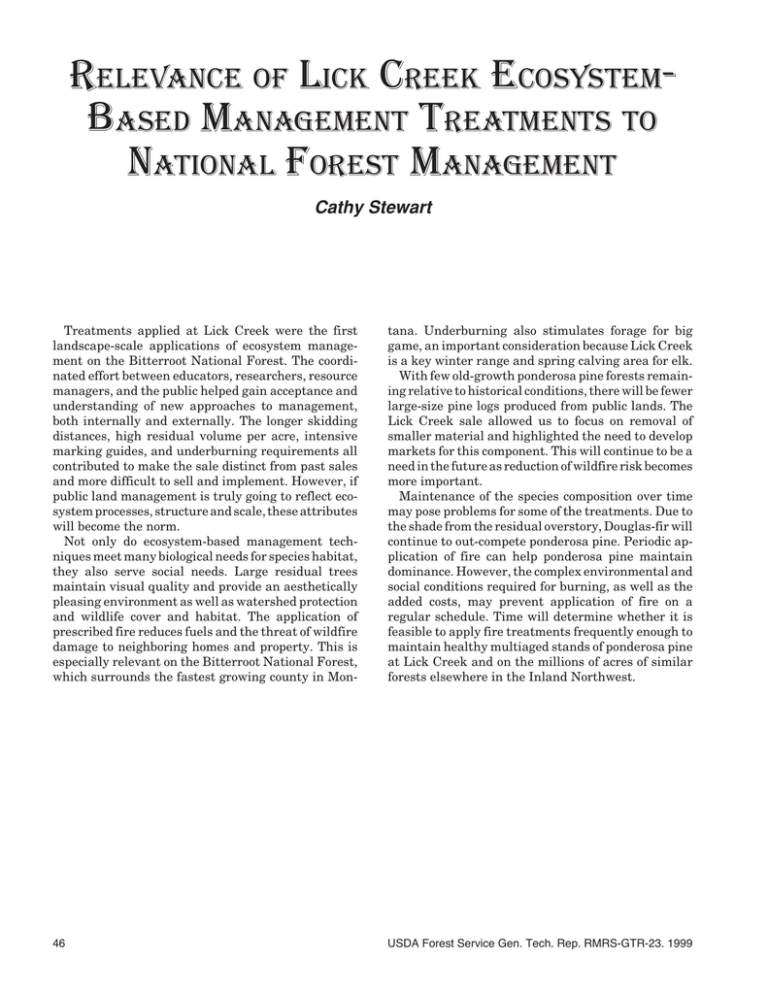
RELEVANCE OF LICK CREEK ECOSYSTEMBASED MANAGEMENT TREATMENTS TO NATIONAL FOREST MANAGEMENT Cathy Stewart Treatments applied at Lick Creek were the first landscape-scale applications of ecosystem management on the Bitterroot National Forest. The coordinated effort between educators, researchers, resource managers, and the public helped gain acceptance and understanding of new approaches to management, both internally and externally. The longer skidding distances, high residual volume per acre, intensive marking guides, and underburning requirements all contributed to make the sale distinct from past sales and more difficult to sell and implement. However, if public land management is truly going to reflect ecosystem processes, structure and scale, these attributes will become the norm. Not only do ecosystem-based management techniques meet many biological needs for species habitat, they also serve social needs. Large residual trees maintain visual quality and provide an aesthetically pleasing environment as well as watershed protection and wildlife cover and habitat. The application of prescribed fire reduces fuels and the threat of wildfire damage to neighboring homes and property. This is especially relevant on the Bitterroot National Forest, which surrounds the fastest growing county in Mon- tana. Underburning also stimulates forage for big game, an important consideration because Lick Creek is a key winter range and spring calving area for elk. With few old-growth ponderosa pine forests remaining relative to historical conditions, there will be fewer large-size pine logs produced from public lands. The Lick Creek sale allowed us to focus on removal of smaller material and highlighted the need to develop markets for this component. This will continue to be a need in the future as reduction of wildfire risk becomes more important. Maintenance of the species composition over time may pose problems for some of the treatments. Due to the shade from the residual overstory, Douglas-fir will continue to out-compete ponderosa pine. Periodic application of fire can help ponderosa pine maintain dominance. However, the complex environmental and social conditions required for burning, as well as the added costs, may prevent application of fire on a regular schedule. Time will determine whether it is feasible to apply fire treatments frequently enough to maintain healthy multiaged stands of ponderosa pine at Lick Creek and on the millions of acres of similar forests elsewhere in the Inland Northwest. 46 USDA Forest Service Gen. Tech. Rep. RMRS-GTR-23. 1999
